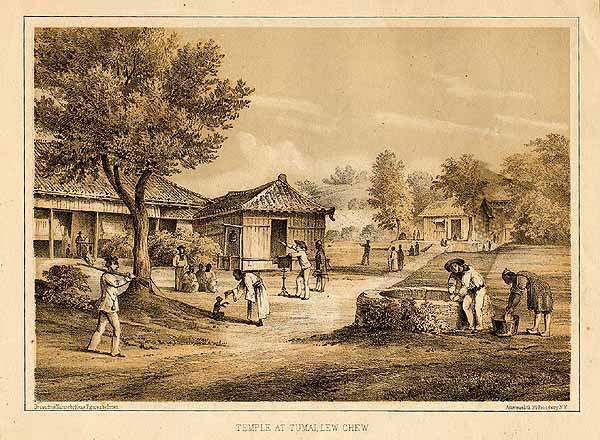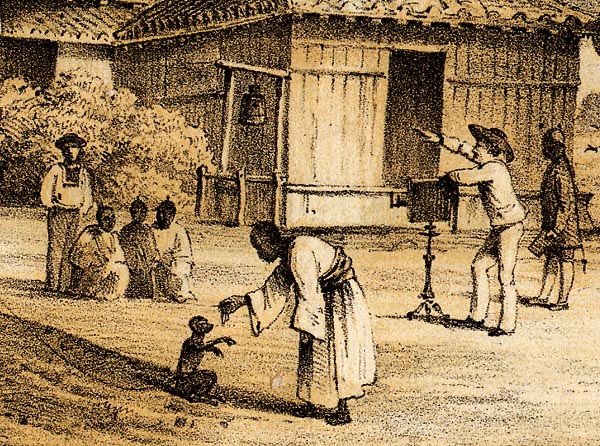lithograph, 1856
Commodore Matthew Calbraith Perry of the United States Navy led a squadron of warships to Japan in 1853, a show of force that was designed to convince the Japanese emperor to open his nation to trade and diplomatic relations with the United States. Perry’s mission achieved its goal when he returned to one year later with a larger fleet; on March 31, 1854 near Yokohama the Shogunate signed the US – Japan Treaty of Kanagawa.
Perry’s expedition included scientists, an expert on Japanese culture, the German-born artist William Heine, and the daguerreotypist Eliphalet Brown, Jr., the first American photographer in Japan. Brown reportedly made around 400 daguerreotypes on the expedition; only a handful are believed to have survived. Because there was no practical method for duplicating large quantities of daguerreotypes, Brown’s images were reproduced in the form of lithographs, often folded into compositions sketched on the scene by Heine. These lithographs, in turn, were published by the U.S. Government in a three-volume set, Narrative of the Expedition of an American Squadron to the China Seas and Japan, Performed in the Years 1852, 1853, and 1854, under the Command of Commodore M.C. Perry, United States Navy (Washington, D.C., 1856-8.)
The example shown here depicts a scene at Lew Chew (now Okinawa), an island that Perry used as a base before sailing into Japanese waters.




